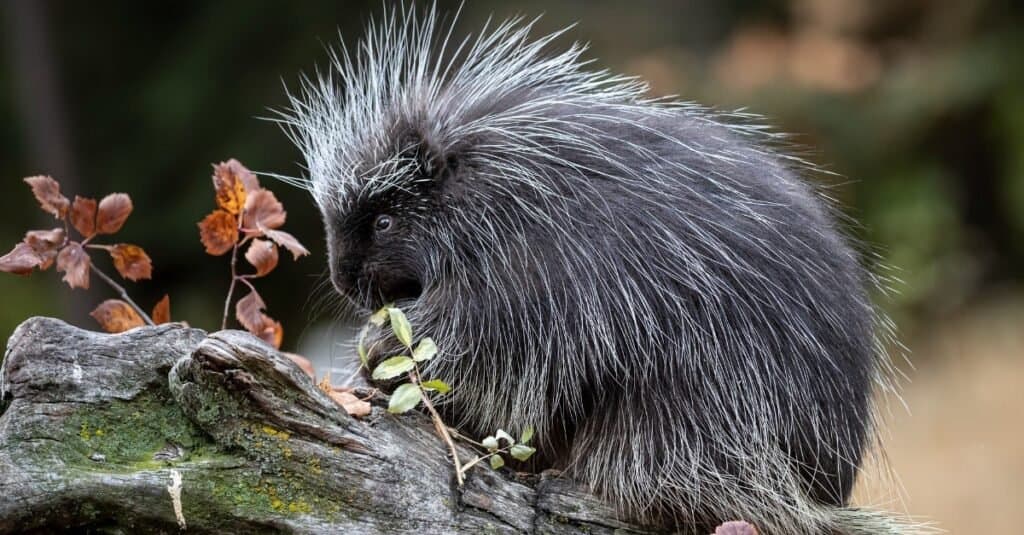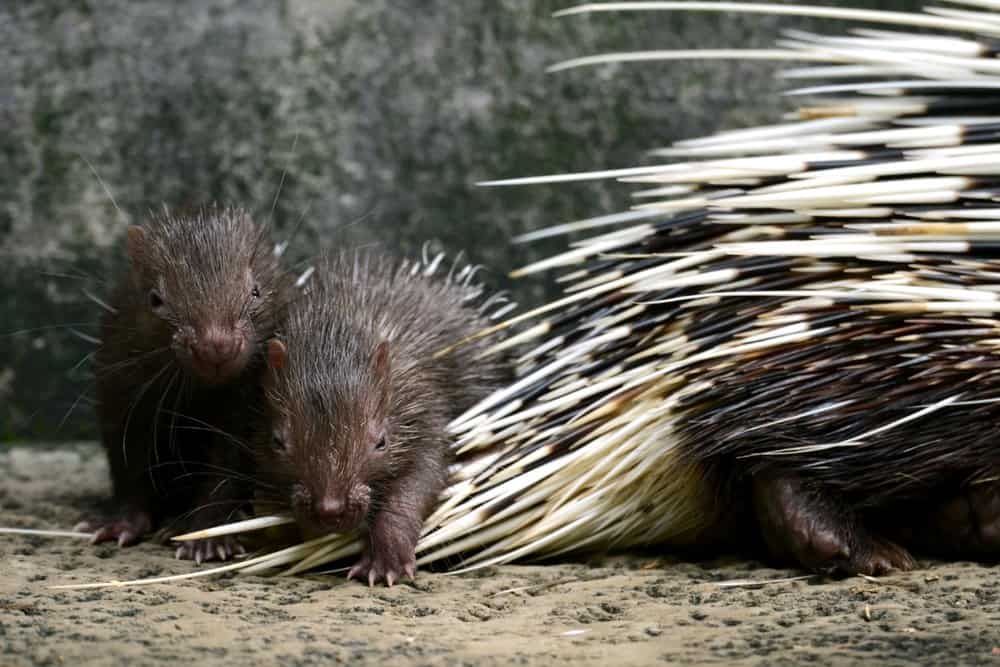Porcupines are medium-sized mammals that are found across North and South America, Asia, Africa, and Europe. They live in various habitats, such as forests, deserts, and rocky outcrops. They are one of the most unusual animals around, as they are covered in sharp spines or quills. In fact, their Latin name means “quill pig.” However, they don’t resemble pigs. Instead, it’s the question “are porcupines rodents?” that sometimes comes up.
In this article, we’ll dive into everything to do with porcupines and discover whether they really are rodents. We’ll learn about their incredibly unique defense mechanism and even bust a common myth about them too. We’ll also talk about their two family groups and the differences between them. So, join us as we discover whether porcupines are rodents or not!
The Background on Porcupines

There are about 58 species of porcupines.
©iStock.com/photomaru
Porcupines are stocky animals with rounded heads, mobile snouts, long tails, and distinctive quills. Their color varies between shades of brown, grey, and white. Their size varies from the smallest species, which is around 12 inches long, to the largest North American porcupine, which is around 34 inches long, not including their tails.
There are two different families of porcupines – Old World (Hystricidae) and New World (Erethizontidae). Old World porcupines are found across Africa, Asia, and Europe, while New World porcupines are found across North and South America. There are about 58 species of porcupines between the two family groups. However, they are extremely diverse, and there are quite a few differences between the two families. Old World porcupines are nocturnal and spend almost all of their time on the ground. New World porcupines are not as strictly nocturnal, are typically smaller, and climb trees, with some species even living exclusively in them.
Are Porcupines Rodents?

Porcupines are rodents and have to gnaw constantly to keep their teeth at a manageable length.
©iStock.com/Carol Gray
Porcupines are rodents. Despite their unusual appearance, they are members of the Rodentia order along with more than 2,000 other species such as rats, mice, beavers, squirrels, and prairie dogs. The Rodentia order is one of the largest and most diverse groups, with more than 40% of all mammals being rodents. Porcupines are the third largest rodents in the world after capybaras and beavers. Porcupines possess the main characteristics which are typical of all rodents.
Typical Rodents?
Although it might seem surprising to find out that porcupines are rodents, they also have the same characteristics that are shared with every rodent in the world – incisor teeth that never stop growing. That’s right; porcupines have incisors that constantly grow. This means that they – along with all other rodents – have to gnaw constantly to prevent their teeth from becoming too long for their mouths. Their incisors are typically large and powerful and sometimes have an orange tinge to them. This is because the enamel that coats them contains iron oxides, giving them a rust color and making them extremely strong. Porcupines also lack canine teeth (as is typical of all rodents) and have a large gap behind their incisors where they should be.
Porcupines are primarily herbivorous and eat plants, leaves, twigs, bark, roots, seeds, fruit, nuts, and berries. However, some species also eat insects and small reptiles. Their diverse diet helps them maintain their teeth at a manageable length.
Mind those Quills!

Porcupine quills drop out easily but grow back quickly.
©dangdumrong/Shutterstock.com
As the prickliest of rodents, the main defining feature of porcupines is their quills. Porcupines are covered in either hard or semi-hard quills on their back, sides, and tail. These quills are actually just modified hairs that are made from keratin. Keratin is the same substance that our hair and fingernails are made from. Despite this, porcupine quills are incredibly sharp and can be up to a foot long, depending on the species. Quills in Old World porcupines are grouped in clusters, while they are attached individually in New World porcupines.
Porcupines use their quills as a defense mechanism to protect themselves against predators. Most of the time, their quills lie flat against their body. However, when threatened, their quills stand up in an impressive display. Any predator that dares to attack usually comes away with quills stuck in their snout. Some quills even have barbs on the end of them, which make them even more difficult and painful to remove. Porcupines also vibrate their incisor teeth together and clatter their cheek teeth as an additional warning to predators. This behavior is known as “aposematism.” Aposematism is when an animal advertises to its predators that it’s not worth eating – because it is venomous, has spines, has a foul taste, etc. Animals display this through coloration, sound, smell, or behavior. Other animals that use aposematism include frogs, skunks, and venomous snakes.
The main predators of porcupines are fishers, but others include foxes, coyotes, wolves, bears, mountain lions, eagles, and great horned owls. In most cases, these predators can only kill porcupines by rolling them over and biting the vulnerable underside where there are no quills.
Busting the Myth
It was commonly thought that porcupines could literally shoot their quills at predators. However, that is completely untrue. Rather, their quills detach really easily when they are touched – which is likely where the myth came from. Quills can even drop out when the porcupine shakes its body. Luckily, they can just grow new ones whenever their old ones drop out!
The photo featured at the top of this post is © iStock.com/Pedro Ferreira do Amaral
Thank you for reading! Have some feedback for us? Contact the AZ Animals editorial team.






